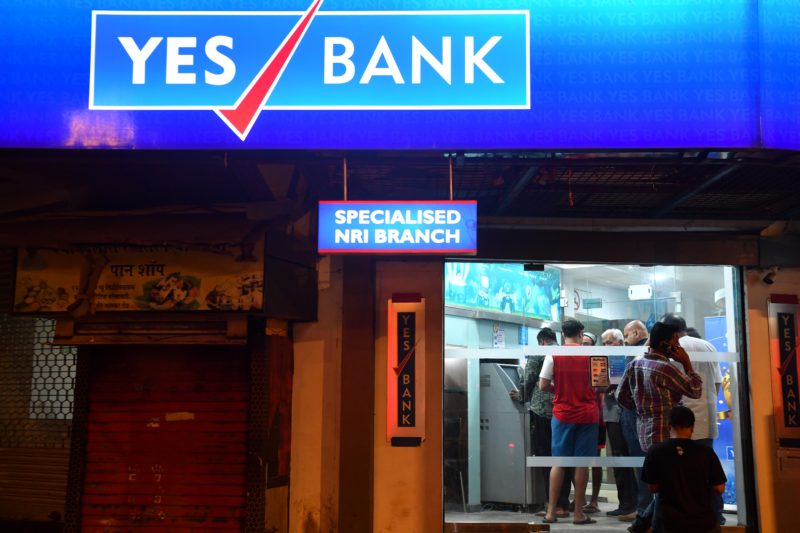Shares in India’s Yes Bank crash on withdrawal limits
(Indranil MUKHERJEE)
Mumbai (AFP) – Shares in India’s Yes Bank plunged as much as 85 percent on Friday after the central bank seized control and imposed withdrawal limits to prevent the collapse of the country’s fourth-largest lender.
The move by the Reserve Bank of India (RBI) sparked a sell-off across the troubled banking sector and sent the rupee falling to its weakest level since 2018.
People queued outside Yes Bank branches after the announcement late Thursday that customers can only withdraw 50,000 rupees ($678) over the next 30 days while the RBI tries to put together a rescue.
The news added to liquidity concerns about India’s financial system more than a year after the near-collapse of IL&FS, one of the nation’s biggest “shadow banks” — finance houses responsible for significant consumer lending.
A resulting reluctance of banks to lend money has exacerbated the woes of Asia’s third-biggest economy, with growth slowing for seven consecutive quarters before picking up with a meagre 4.7-percent expansion in the final three months of 2019.
Yes Bank’s exposure to the shadow banking sector is particularly large and it has been struggling for some time to raise fresh capital to free itself of a mountain of bad loans in order to quell worries about its viability.
“Investors have turned risk averse and the contagion is likely to hit smaller bank and non-bank finance companies,” said Abhimanyu Sofat at IIFL Securities.
“How soon the RBI finalises the rescue plan is key as persistent operational curbs increase uncertainty,” Sofat told Bloomberg News.
The RBI put the blame on “serious governance issues and practices in recent years” but said there was “no need to panic”.
However, customers waiting to get their money were far from reassured.
“It’s not clear at the moment, and that is making some people panic a bit. Even I am at the moment,” Devika, a student and Yes Bank account holder, told AFP as she queued to withdraw money in New Delhi.
“I had purchased 15 shares of Yes Bank at 150 rupees per share and now they are at 15 rupees. It’s a huge dent on my investments and even my deposits are locked in,” Varsha Gandhi, a Mumbai-based lawyer told AFP.
“I am just waiting to see if RBI’s moves will have any positive impact. But it’s a huge loss as the stocks have tanked,” 27-year-old Gandhi added.
RBI governor Shaktikanta Das also tried to reassure account holders.
“The 30 days which we have given is the outer limit, you will see very swift action from the RBI to put in place a scheme to revive Yes Bank,” he told reporters in the financial capital Mumbai on Friday.
According to media reports, the RBI was attempting to cobble together a rescue that included State Bank of India (SBI), the country’s largest lender, and other financial institutions.
“There are legitimate questions being raised about the bank’s balance sheet, ability to raise capital and the central bank and SBI may have to take quick steps to revive it in the next few days,” Ashutosh Datar, an independent economist in Mumbai, told AFP.
“The next few weeks are crucial for Yes Bank’s survival,” said Sameer Narang, an economist at State Bank of Baroda.
By early afternoon in Mumbai, Yes Bank shares had recovered slightly but were still down 59 percent at 15.20 rupees.
Disclaimer: Validity of the above story is for 7 Days from original date of publishing. Source: AFP.


